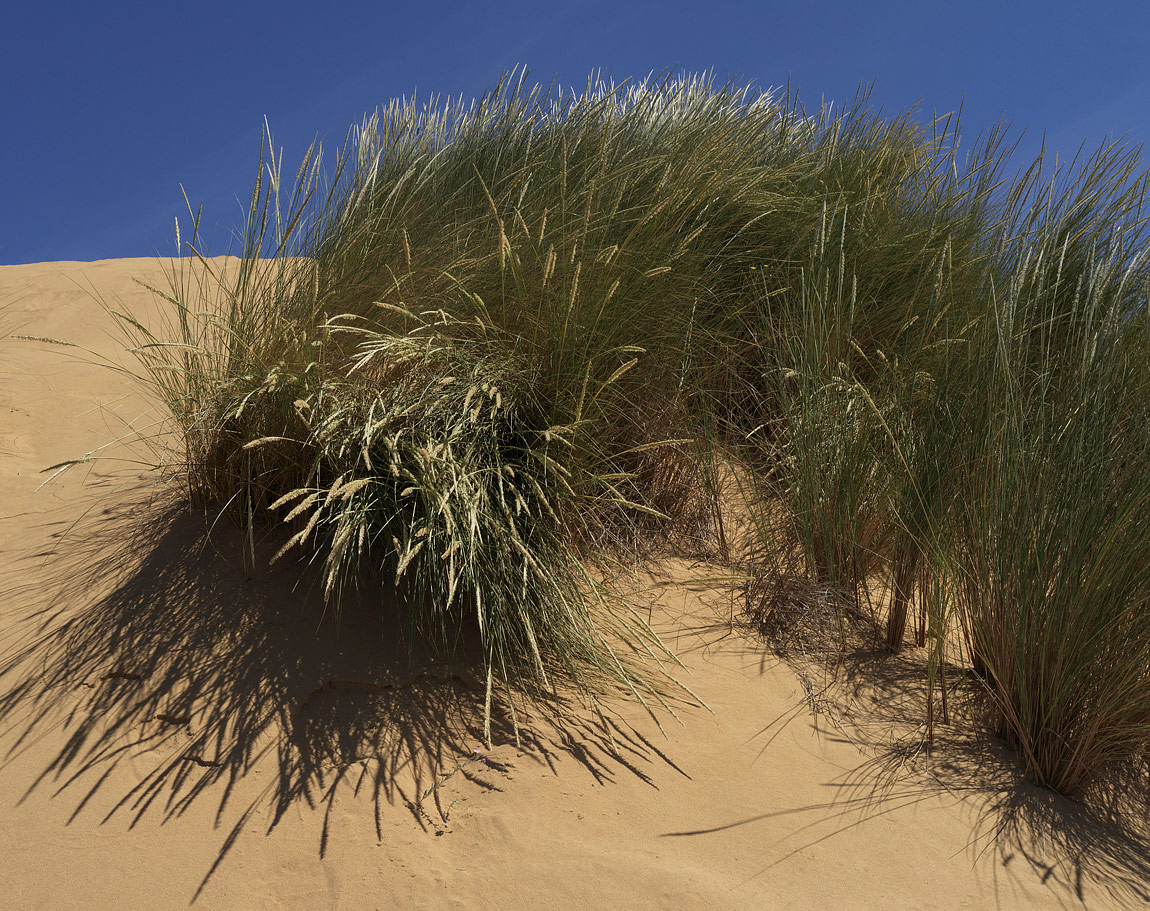The coastline of southern Portugal is composed of extensive beaches with dune chains interspersed with cliffs. Until the 1980s, human occupation was small all around the year and was based on fishing, agriculture and shellfish gathering. This region's excellent preservation and distinctive character led to its declaration in 1988 as a Natural Park, a protected area. However, human occupation, particularly tourism, has dramatically increased in the last two decades. Linked with a persistent lack of rain and rising air temperature, coastal ecosystems of the Natural Park are under pressure, which can lead to their degradation.
Beach primary dunes are particularly sensitive to spoilage and degradation, as the vegetation is only herbaceous, and the sand is a substrate easily transported by the wind. The European beachgrass is the most important perennial herbaceous plant for fixing sand and maintaining primary dunes (Ammophila arenaria (L.) Link).
Last April, when visiting Carrapateira, a beach ln the southern part of the Natural Park, one of the most beautiful beaches of Portugal and perhaps of Europe, I was surprised by a dune where European beachgrass was very abundant and grew luxuriantly. The sun was shining in the sky and on the grass. A moderate wind made the plant leaves, and flowers undulate — the brown-yellow sand contrasted with the midday sky's blue. Using the minimum aperture of the lens (f/22), I got all the planes focused. It was wild nature at its best.


